Best EQ pedals 2025: must-have effects to tame your tone
Our expert pick of EQ pedals for the discerning player from the likes of Boss, Chase Bliss Audio, MXR and more
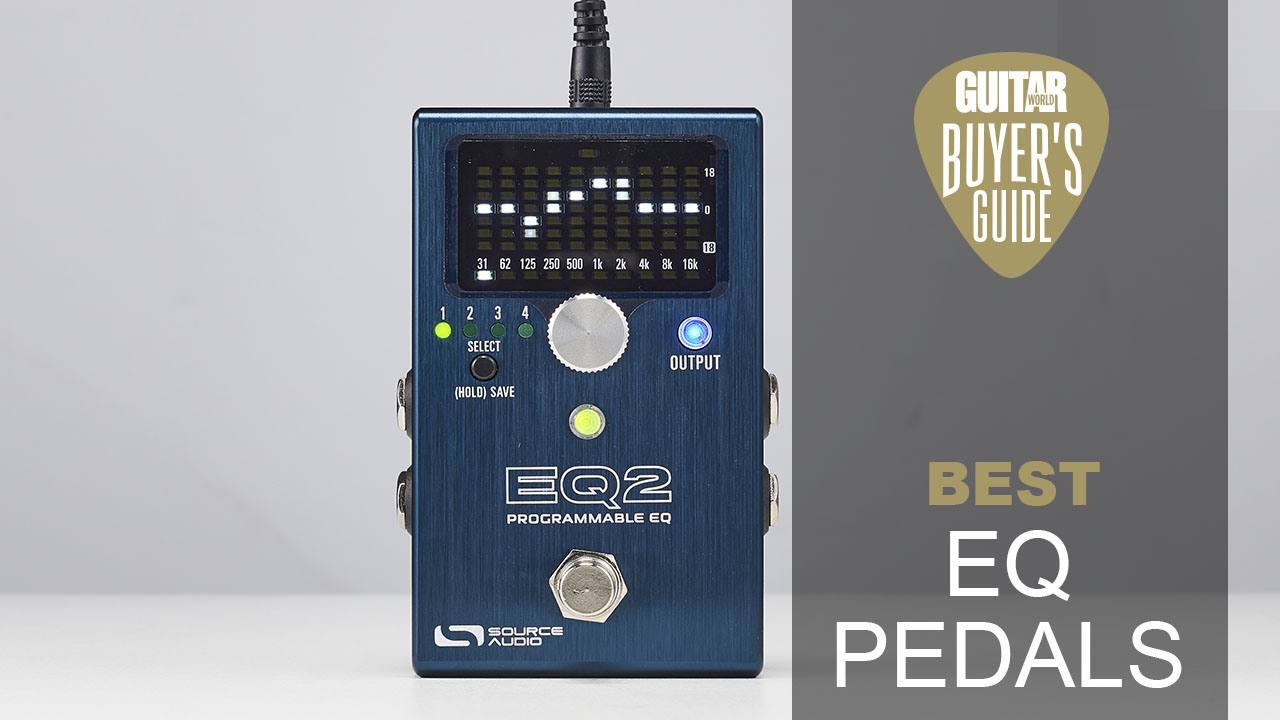
1. Our top picks
2. Full product guide
3. Buying advice
4. How we choose products
The best EQ pedals, just like power supplies, aren’t exactly the most exciting topic, especially for new players, but it's one of the most important. As anybody who's accustomed to working in the studio knows, compression and EQ are the two most common things that guitarists overlook.
Now, if you're playing a high-energy set in a basement to a hundred people, the crowd will forgive you for getting EQ or compression a bit wrong. Still, as a way to supercharge your tone, these tools shouldn't be overlooked.
In the case of EQ pedals, you can make yourself sound louder, tighter and punchier simply by using different EQ settings for different parts. Not only that, but since most EQs have a master volume, if needed you can make yourself louder in absolute terms as well.
Here we'll take a look at the best options and provide you with some buying advice to help you fine-tune your choices.

Alex Lynham is a gear – and in particular, pedal – obsessive who's been collecting and building modern and vintage equipment since he got his first Saturday job. Besides reviewing countless effects for Guitar World and Total Guitar, he's written guides on how to build your first pedal, how to build a tube amp from a kit, and briefly went viral when he released a glitch delay pedal, the Atom Smasher.
Best EQ pedals: Our top picks
For a straightforward, budget option, the Boss GE-7 is a solid choice. Previously, due to noise issues on the GE-7, it was hard to recommend. However, newer units no longer have this issue. Over our previous go-to recommendation of the MXR six-band EQ, you get another band plus a master boost band. The only drawback is of course that as a Boss pedal, it's not true bypass.
At the higher end, the Boss EQ-200 is great if you want a pedal that balances power-user features with a relatively simple user interface. However, if you really want to break the budget, the Chase Bliss Automatone is the way to go. If you're a believer in the idea that the mojo and vibe of a pedal can change the way you play, then they don't get much cooler than this. It sounds fantastic, looks fantastic, and is inspiring to use and play through.
Best EQ pedals: Product guide
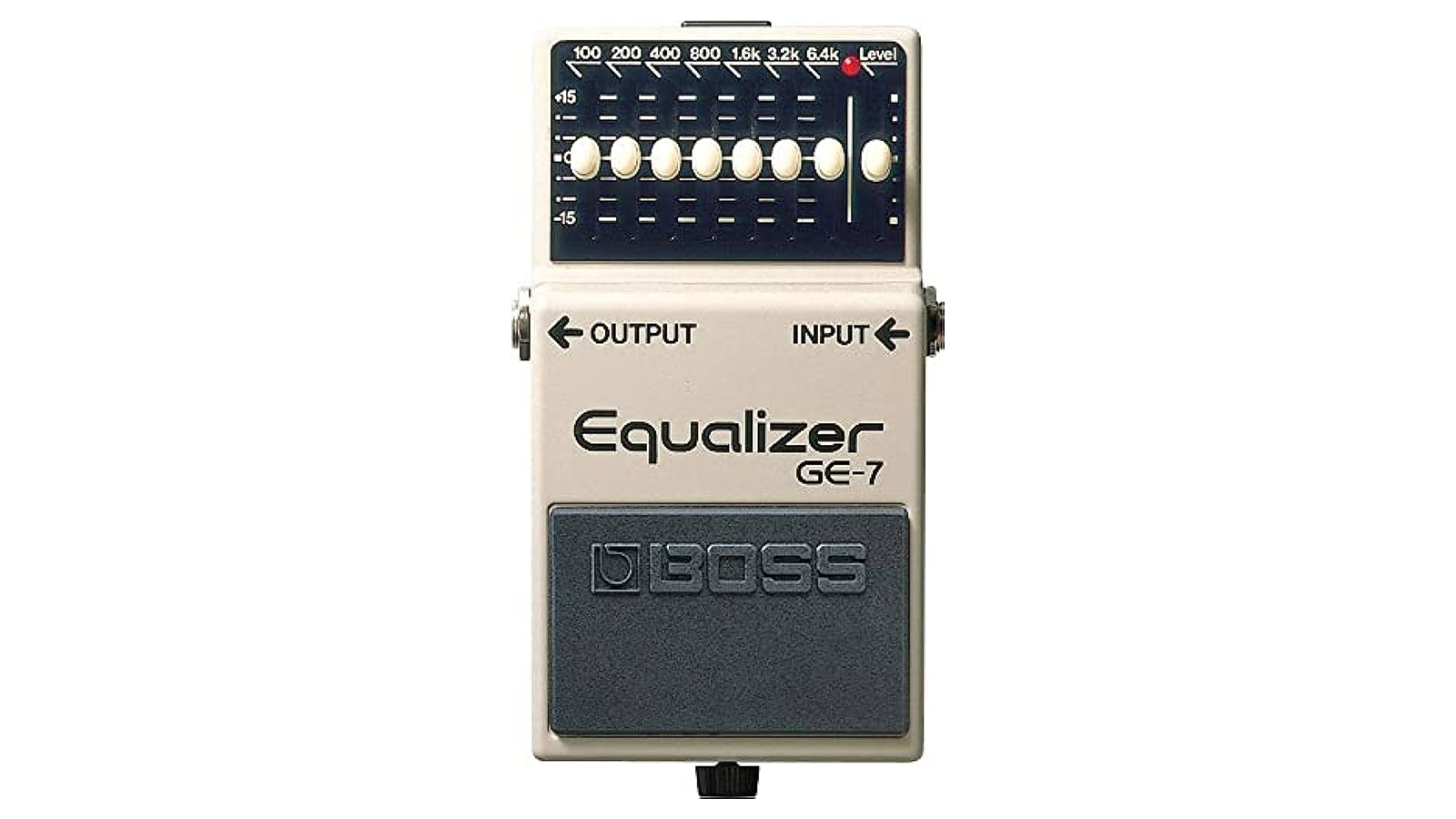
1. Boss GE-7
Our expert review:
Specifications
Reasons to buy
Reasons to avoid
The Boss GE-7 is a solid and affordable EQ. The reason it's not commonly recommended is because its op-amp often caused noise in the audio signal path.
Depending on who you believe, the op-amp choice was either a cost-saving measure, or one aimed at increasing the battery life of the unit in an era where fewer players had a decent pedal power supply. Whatever the reason for the choice, its effect was unevenly felt, with some units being quiet and some having an unusable hiss.
Of course, there was a straightforward mod available if you were a little handy. Removing the op-amp and replacing it would reduce the noise. This is no longer needed, however. In moving to a fully SMD design for the new GE-7, the op-amp used has changed, and reportedly the noise issues are gone. This change has resulted in the GE-7 becoming a better option than ever, assuming you get one of the current run.
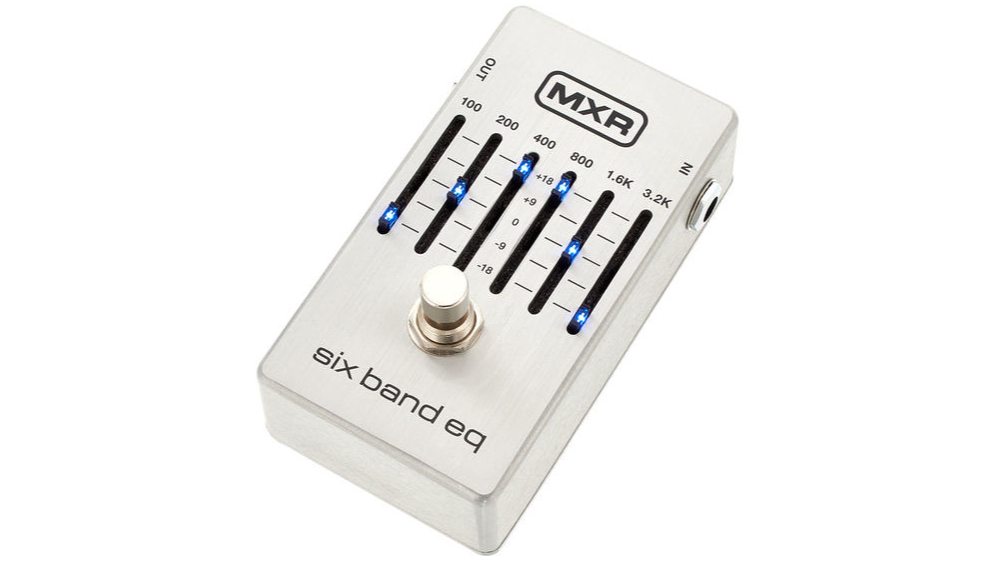
2. MXR M109S Six Band EQ Pedal
Our expert review:
Specifications
Reasons to buy
Reasons to avoid
Sometimes simpler is better. The newest versions of the MXR 6B are lower noise, and sport true bypass switching and LEDs on the sliders for live use on a darkened stage.
Each active band offers a whopping 18dB of boost or cut, although there's no master level control. The bands start at 100Hz and go up to 3.2kHz, meaning there's no high treble control. However most amps likely have a shelving EQ that can add some additional brightness there if required.
Although most will run it in front of an amp, there's also the option of running it in the effects loop. Here it can be used like the graphic EQ on a Mesa amp to radically reshape a distortion tone for lead or rhythm use.
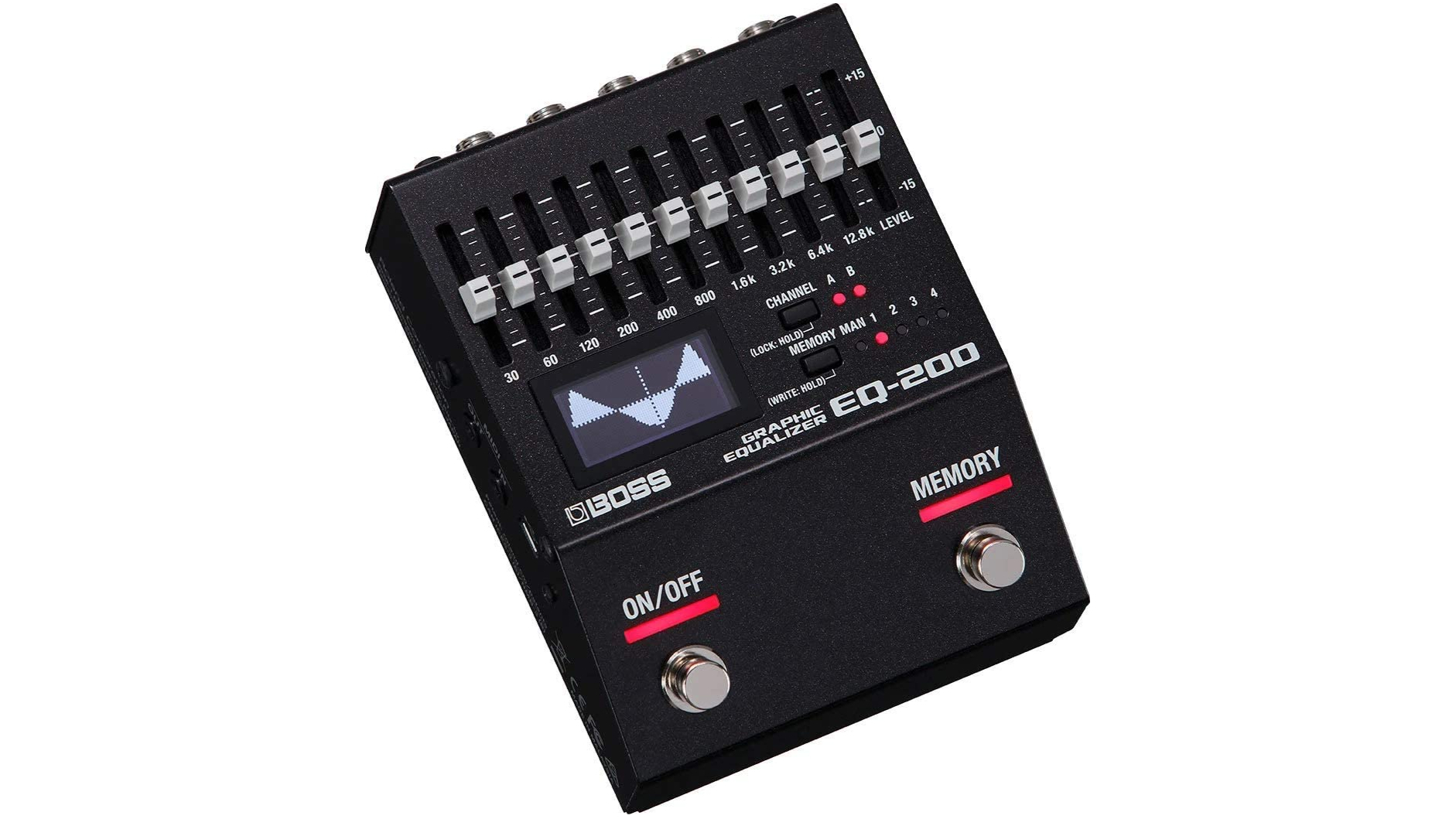
3. Boss EQ-200
Our expert review:
Specifications
Reasons to buy
Reasons to avoid
The Boss EQ-200 is nothing less than a studio rack EQ in pedal format. In fact, in terms of its functionality it even goes beyond a graphic EQ and closer to a DAW graphic EQ, complete with visual curves. Once you factor in the insert, it reveals itself in a similar space to the Chase Bliss in terms of tone-shaping before your amp, albeit without a dedicated pre.
It's got dual 10-band EQs that can be run in stereo, parallel or series, meaning it can accommodate wet-dry rigs and complex setups in a single pedal, with full MIDI control over parameters. Each band is active, with 15dB of boost or cut on tap, and the overall range covered by the range of the bands is customisable as well.
Finally, for all its horsepower, it has some additional ergonomic features. There's customizable footswitches, and the ability to disable the front-panel controls to avoid any live mistakes.
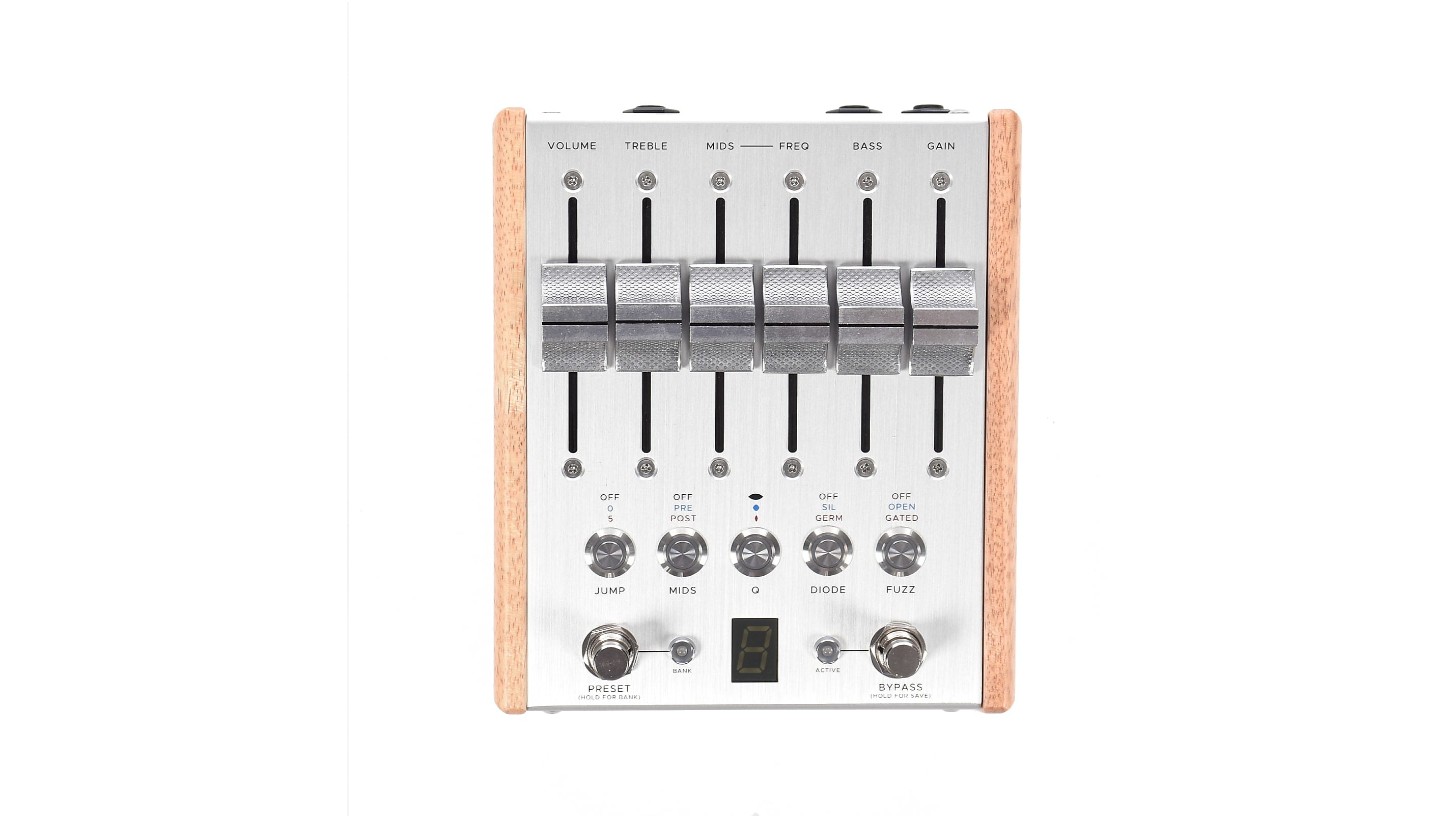
4. Chase Bliss Audio Automatone Preamp Mk II
Our expert review:
Specifications
Reasons to buy
Reasons to avoid
The Automatone is the pinnacle not only of boutique EQ options, but also of preamps more generally. It's a collaboration between Chase Bliss and Benson Amps, so comes with an impressive pedigree. It takes its inspiration from Benson Amps' excellent Chimera preamp - a version of their 30W Chimera amp, with the tubes replaced by FETs.
This preamp design is then married to an EQ based on the semi-parametric design found on Chase Bliss' Condor pedal. Consequently there's three different mids resonance options and a variable Q control. Not only that, but the mid frequency itself is fully variable, controlled by a dedicated slider.
It's got volume and gain sliders too, for level control. While it's got enough gain on tap to kick a guitar amp into saturation, that wasn't quite enough. Chase Bliss rounded off the Preamp with the ability to deliver full blown fuzz, with silicon and asymmetric germanium diode clipping available. The fuzz is also switchable from from an 'open' to a 'gated' bias setting.
Did we mention it has motorized sliders? Oh, well, it does, and they're really cool.
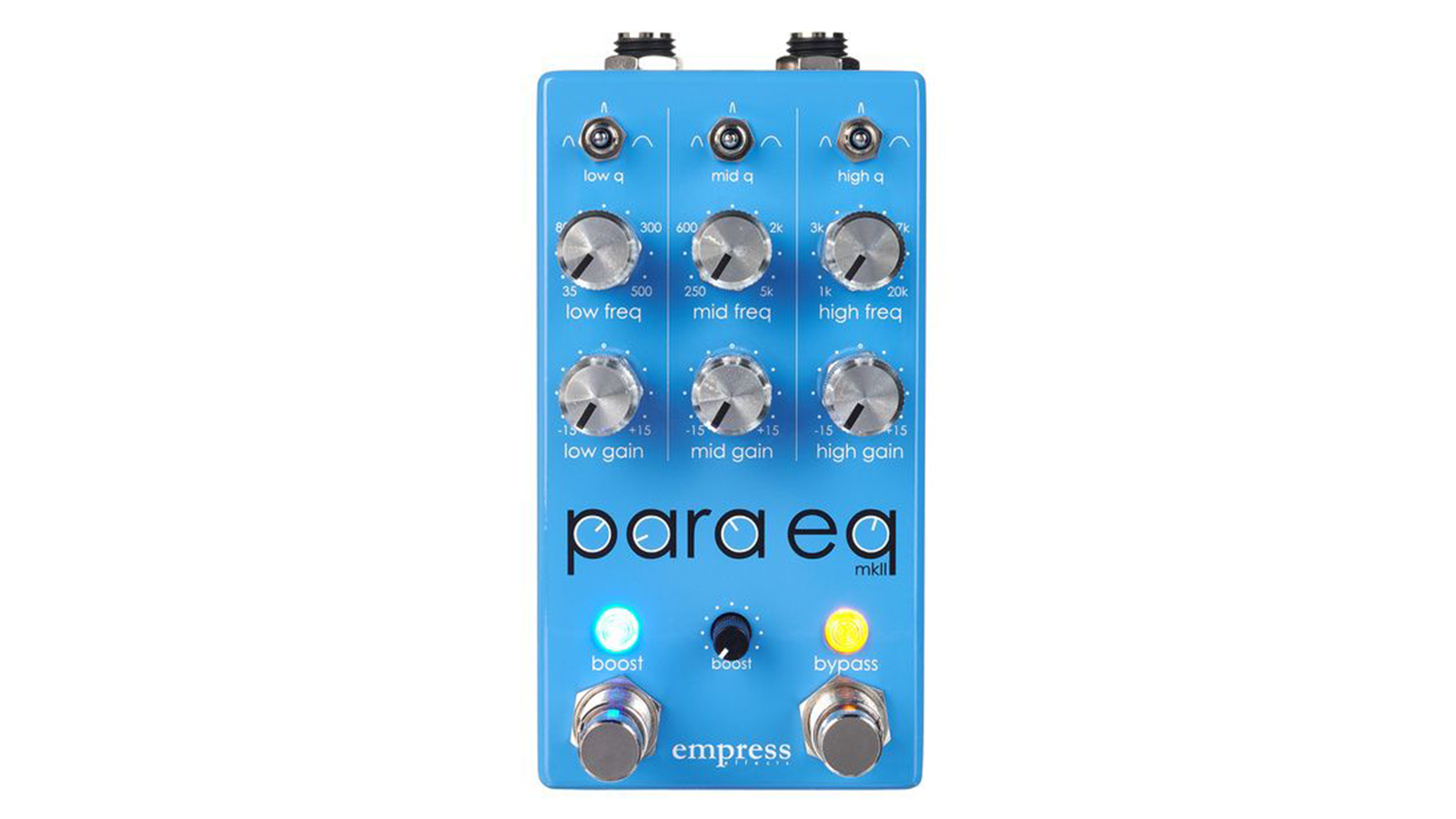
5. Empress ParaEQ MKII Deluxe
Our expert review:
Specifications
Reasons to buy
Reasons to avoid
Simply put, there is no alternative to the Empress Para EQ in a compact format. Despite being small enough to fit on most pedalboards, it has three parametric bands, a high pass and low pass filter, and two shelving filters for high and low frequencies. It even has a boost on a second footswitch. This means, at least in terms of gain, you're effectively getting a two-channel preamp.
Parametric EQ is very common in studio applications, with the most common set of EQ moves for a guitar being to apply two or three parametric bands as well as high pass and low pass filters. The ParaEQ will allow you to have this kind of control live, in a pedal format with high headroom.
The non-deluxe version of the ParaEQ ships without the HP/LP and shelving filters. However, once you're spending that kind of money on an EQ, there's value in having the additional filters. You'll never need to buy another EQ again.
Because of the control you have over the Q of the three main bands, this pedal can be subtle in terms of the EQ moves available. Moreover, it has the depth to be a useful studio tool as well, for either guitar, bass or synths.
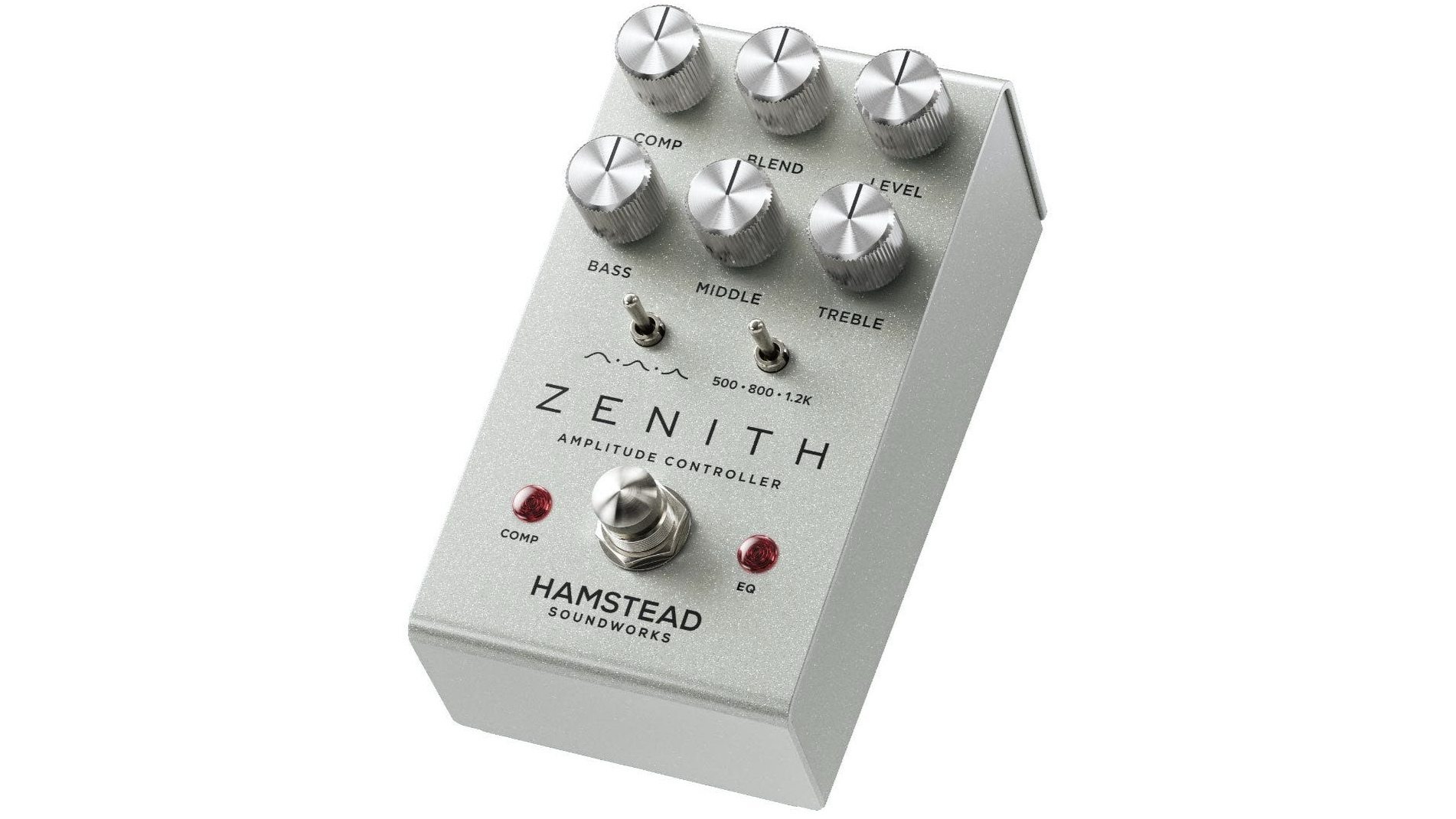
Specifications
Reasons to buy
Reasons to avoid
The Zenith combines a boost, EQ and compression into a full-featured preamp option. The boost has up to 20dB of transparent gain on tap, but the EQ is a bit more subtle. The amp-like 3-band EQ controls are active, but have a relatively restrained boost and cut range. The middle control has additional controls to help it gel with other pedals. There's a three-way switch for Q, and a frequency selector that spans from low mids (500Hz) to more conventional mid frequencies (800Hz and 1.2kHz).
Hamstead took an opinionated approach to the compression, as it's fixed, with a fast attack and medium decay. The compression knob simply controls the amount of compression, while the blend control allows you to mix the wet and dry. While it might not replace a dedicated compressor pedal in some rigs, for most players, it's intuitive enough and sounds good enough to be an 'always on' tone shaping tool.
Finally, there's also a circuit order control, like that found on other Hamstead pedals. In this case, it allows you to place the EQ before, after, or in parallel with the compression circuit for added flexibility.
Read our full Hamstead Soundworks Zenith Amplitude review
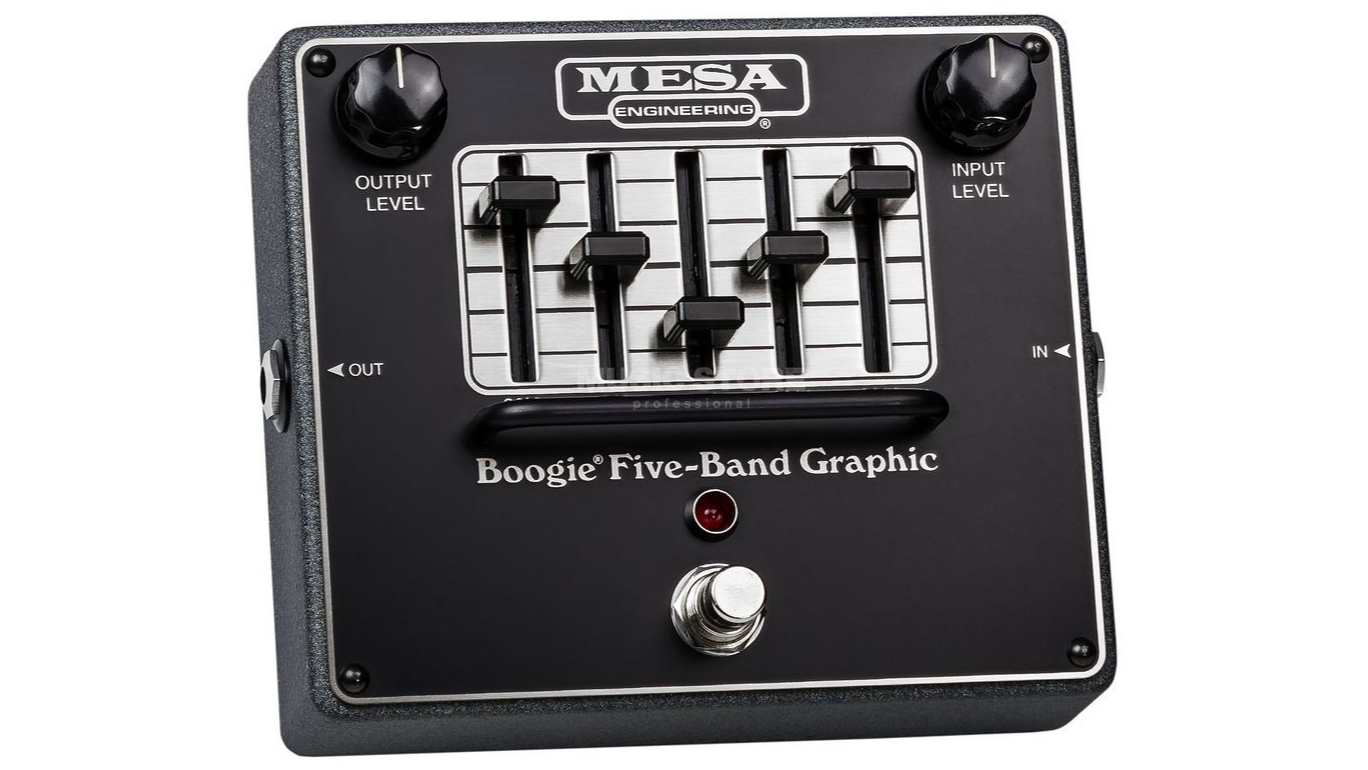
7. Mesa Boogie Five-Band Graphic EQ
Our expert review:
Specifications
Reasons to buy
Reasons to avoid
The Mesa Mark series is famous for its 5-band graphic EQ. This flexible and intuitive EQ control saw the Mark series become a staple of studio session players.
The core of the pedal is simple - it's literally the same components as a Mesa Mark amp, with 5 bands of active EQ offering 12dB of boost or cut. At the input and output there's an active level control with an additional 6dB of boost or 40dB of attenuation available.
While there aren't as many bells-and-whistles as some other options, the Mesa Five-Band does exactly what it should. It's an amp-like EQ, with a bombproof build, perfect for live or studio use.
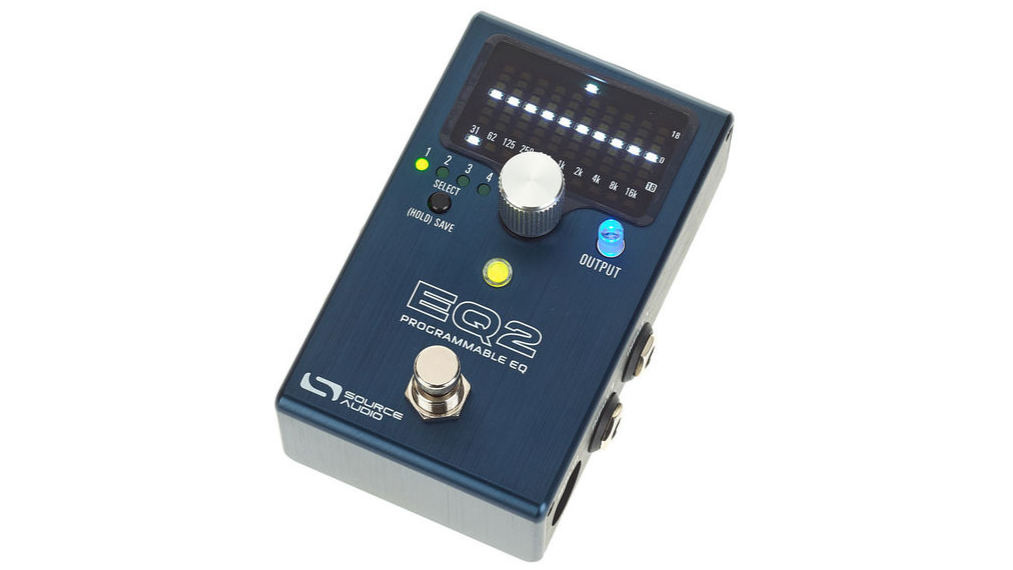
Specifications
Reasons to buy
Reasons to avoid
For those that want the flexibility of the Boss unit but don't have the pedalboard real-estate, there's the EQ2, which Source Audio claim is the most powerful EQ on the planet. Given it's the choice of David Gilmour and John Mayer, obviously others agree.
Like the EQ-200, it has ten bands, and stereo in and out. Each band can be fully customized between 20Hz and 20kHz, offering 18dB of boost or cut. There's also the option of adding a noise gate or limiter, to control the dynamics of the signal even further.
The EQ2 can store 128 presets, with 4 accessible via the quick selection on the front panel. It's possible to program the EQ2 using the single rotary encoder on the pedal. However, due to its complexity, It's easiest to work with via Source Audio's desktop or mobile applications, or via MIDI.
Read our full Source Audio EQ2 review
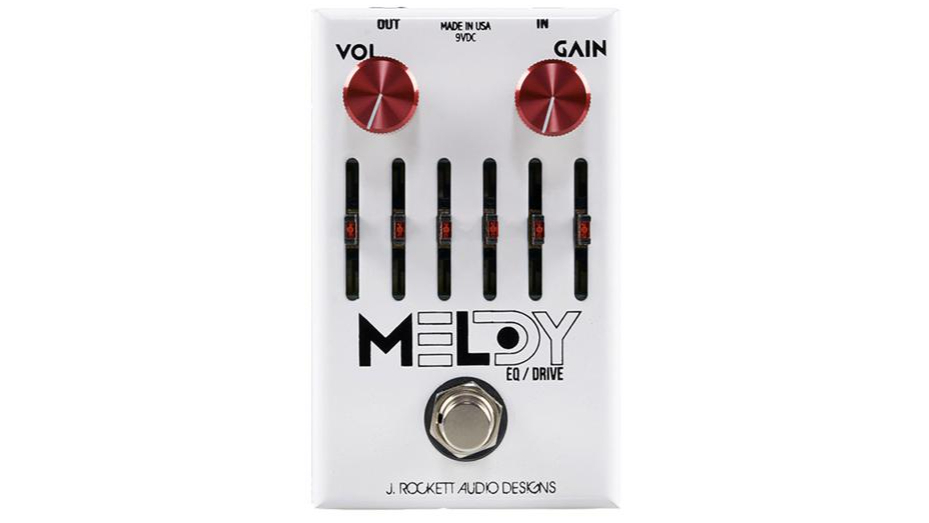
9. J.Rockett Designs Melody
Our expert review:
Specifications
Reasons to buy
Reasons to avoid
The Melody is an EQ and drive pedal that is almost - if you squint - a boutique take on the 6B.
Like the 6B, it has 6 bands of 18dB active boost and cut, with stage-ready LED lit sliders. However, unlike the 6B it also has a master level, which allows for more subtle EQ shaping. Finally, it's also got a gain control to add saturation, making it even more flexible. With the gain down, it's a characterful EQ, while with the gain up it's a flexible and uniquely-voiced overdrive for either rhythm or lead use.
It's the signature pedal of guitarist Mark Lettieri, so naturally it's aimed at lower gain material, but it can span a range all the way from jazz to rock.
Best EQ pedals: Buying advice
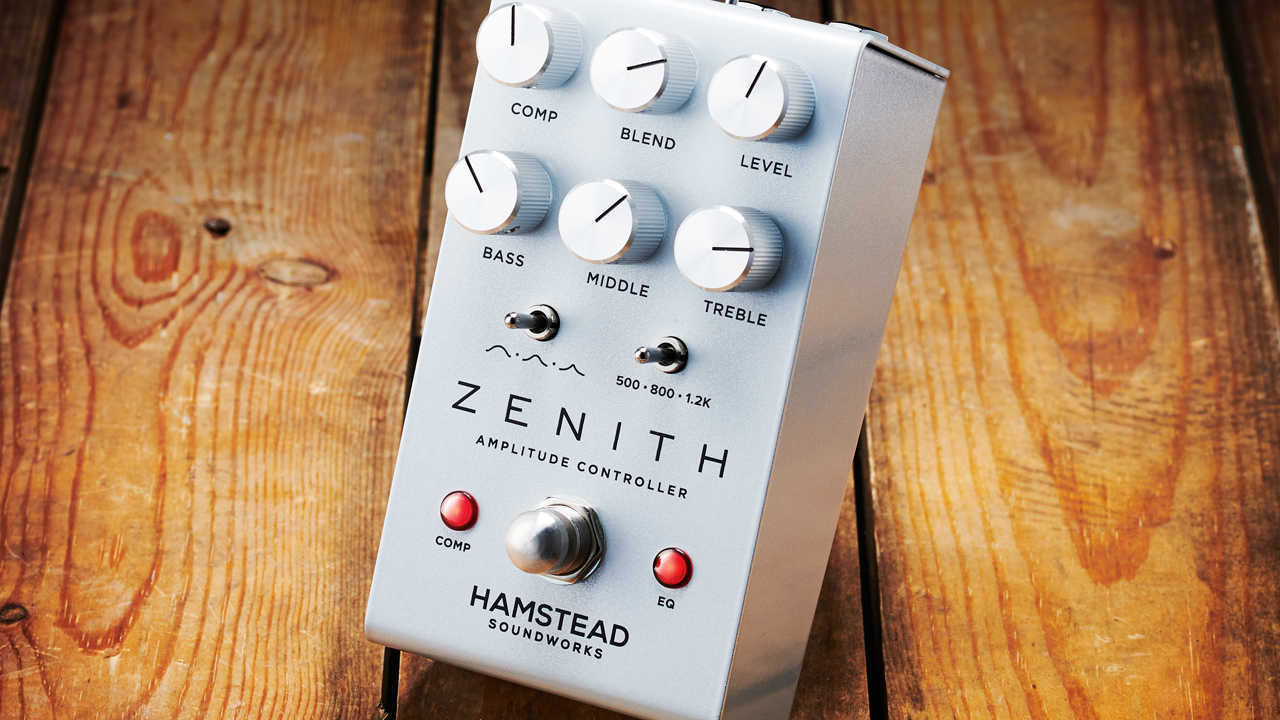
How to choose the best EQ pedal for you
You can trust Guitar World
Despite being a very useful category of effect, the reality is that many players aren't prepared to open their wallet for just an EQ. As a result, many EQ pedals are an EQ and a preamp in one. Moreover, any EQ that has active bands has to contain amplifier stages, and usually a master volume. This means that the distinction between an EQ pedal and a preamp is a little fuzzy to begin with.
For the purposes of this guide, we'll cover some preamps that also feature a powerful EQ. Including preamps adds additional variables you might want to consider. For example, whether it is discrete, transistor, (J)FET or op-amp, and how much gain is on tap. Since the distinction between preamp and boost pedal is also blurry, the tone and timbre of the preamp, and whether it can cross over into overdrive might also be a factor in your decision.
Once you've decided on what preamp features you want, it's time to consider the EQ part. On the pure EQ side of things, there's two main considerations to factor in.
What types of EQ are there?
The first is what type of EQ. The two that you will encounter in pedal format are graphic and parametric. The majority of guitar pedal EQs are graphic EQs, which have fixed bands of audio that can be boosted or attenuated. Usually these are controlled by sliders. Some digital effects let you set these bands yourself, but analog pedals will have these fixed. The second type, parametric, is where you have an adjustable band of audio with control over the Q, or shape. Typically you only see a single parametric band on advanced EQs, often for mids.
How many bands do I need?
The second main question is how many bands you need. For a parametric EQ, this is likely to be between one and three. For a graphic EQ, the number will typically be between 6 and 10 bands. These are spaced at frequencies that correspond to octaves above a fundamental.
Both a parametric EQ with 3 bands, or a graphic EQ with 5 or more are going to give you radically more control over your tone than almost any guitar amp.
How we choose the best EQ pedals
Here at Guitar World, we are experts in our field, with many years of playing and product testing between us. We live and breathe everything guitar related, and we draw on this knowledge and experience of using products in live, recording and rehearsal scenarios when selecting the products for our guides.
When choosing what we believe to be the best EQ pedals available right now, we combine our hands-on experience, user reviews and testimonies and engage in lengthy discussions with our editorial colleagues to reach a consensus about the top products in any given category.
First and foremost, we are guitarists, and we want other players to find the right product for them. So we take into careful consideration everything from budget to feature set, ease of use and durability to come up with a list of what we can safely say are the best EQ pedals on the market right now.
Read more about our rating system, how we choose the gear we feature, and exactly how we test each product.
Related buyer's guides
- The best boost pedals you can buy today
- Clean up your signal with the best noise gate pedals
- Enhance your tone with the best compressor pedals
All the latest guitar news, interviews, lessons, reviews, deals and more, direct to your inbox!
Alex Lynham is a gear obsessive who's been collecting and building modern and vintage equipment since he got his first Saturday job. Besides reviewing countless pedals for Total Guitar, he's written guides on how to build your first pedal, how to build a tube amp from a kit, and briefly went viral when he released a glitch delay pedal, the Atom Smasher.
